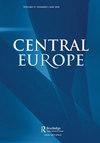中欧知识考古学:探索波兰和乌克兰文学(1989-2014):导论
IF 0.1
2区 历史学
Q2 HISTORY
引用次数: 0
摘要
1989年,波兰与该地区的其他苏联卫星国一起,不再是一个共产主义国家。不久之后,苏联解体,乌克兰在时隔近70年后重新获得独立。随着政治自由和市场经济的发展,1989年和1991年中欧国家的发展既纵向又横向;边境被开放,“铁幕”和东西分裂被认为不再存在。在波兰,现代化进程是迅速的,不仅包括政治和经济,而且包括社会和文化领域。乌克兰也采取了类似的措施,但实施效果不那么明显。然而,一旦波兰成为北约(1999年)和欧盟(2004年)的成员,两国之间的政治和经济分歧变得更加明显。尽管如此,在这两个国家的文化领域内,人们可以观察到类似的趋势:一方面是地方身份(如西里西亚、加利西亚)的复兴和新问题(如性别)的出现,另一方面是对宏大叙事的后现代怀疑。然而,在弗朗西斯·福山和平的“历史终结”期间,中欧短暂的生活氛围在2014年俄罗斯军队吞并克里米亚时被打断了。四分之一个世纪后,东西方之间的旧分歧再次出现,乌克兰变成了一个处于战争状态的国家。下一卷收集的研究可以被视为考古项目,因为他们的调查对象-来自乌克兰和波兰的空间叙述-反映了主要的地缘政治变化及其对当地社区的影响。将以不受限制的方式使用和处理的是福柯式的“知识考古学”概念。“考古学”在这里被理解为一种不受严格的结构主义方法约束的话语分析。由于本期特刊的所有作者都在不同的语境中通过地缘政治的关键(但没有任何统一的时间化模型)来构思文学,这种“考古学”使他们能够应用广泛的分析条件,从而揭示不同形式的想象世界。这种方法是多么富有成效,这一事实表明,空间叙事本身能够出现新的美学和话语,以及(重新)出现的地方神话及其在(重新)创造不同的集体记忆中的构成作用——例如,波兰和乌克兰作家都利用了哈布斯堡的加利西亚神话。本期特刊的所有文章都对塑造波兰和乌克兰居民文化记忆的叙述提出了质疑。作者强调了文学和大众文化在提供过去和现在的不同愿景方面的作用。他们的方法论背景的最大共同优点是他们拒绝概括和普遍化地神学。反过来,它们又超越了已经巩固的元叙事本文章由计算机程序翻译,如有差异,请以英文原文为准。
The Central European Archaeology of Knowledge: Exploring Polish and Ukrainian Literature (1989–2014): Introductory Essay
In 1989, Poland, together with other Soviet satellite states in the region, ceased to be a communist country. Shortly after this the USSR dissolved, and Ukraine — after almost seventy years — regained its independence. With political freedom and market economies, the years 1989 and 1991 brought Central Europeans both vertical and horizontal; borders were opened, and the ‘iron curtain’ and East-West divisions was assumed not to exist anymore. In Poland, the processes of modernization were rapid, and encompassed not only politics and economics, but also the social and cultural spheres. Similar steps were taken in Ukraine, but they were implemented with fewer visible effects. However, once Poland became a member of NATO (1999) and then the European Union (2004), the political and economic divisions between the two countries became more evident. Nonetheless, within the cultural spheres of both countries one could observe similar tendencies: the revival of local identities (e.g. Silesian, Galician) and the appearance of new issues (such as gender) on the one hand, and a postmodern scepticism towards grand narratives on the other. However, the atmosphere of living in a transitory Central Europe during Francis Fukuyama’s peaceful ‘end of history’ was interrupted in 2014 when Russian troops annexed Crimea. After a quarter of a century the old divisions between East and West reappeared, with Ukraine transformed into country at war. The studies collected in the following volume can be seen as archaeological projects, as the objects of their investigation — spatial narratives from Ukraine and Poland — reflect the main geopolitical changes and their consequences for local communities. It is the Foucauldian notion of the ‘archaeology of knowledge’ that will be used, and treated, in an unrestricted manner. ‘Archaeology’ is understood here as being a type of discursive analysis that is not bound to the rigorous structuralist method. As all of the authors in this special issue conceive literature in distinct contexts and through a geopolitical key (yet without any uniform model of temporalization), this kind of ‘archaeology’ has enabled them to apply a wide range of analytical conditions and thus reveal different forms of imagined worlds. How fruitful this approach might be is shown by the fact that spatial narratives themselves enable the appearance of new aesthetics and discourses, as well as the (re)emergence of local myths and their constitutive role in (re)creating different collective memories — for instance, both Polish and Ukrainian authors made use of the myth of the Habsburg’s Galicia. All the articles in this special issue question the narratives that have shaped the cultural memory of the inhabitants of Poland and Ukraine. The authors have highlighted the role of literature and popular culture in providing alternative visions of the past and the present. The greatest common advantage of their methodological background is their rejection of generalizing and universalizing geopoetics. In turn, they go beyond the meta-narratives that have consolidated
求助全文
通过发布文献求助,成功后即可免费获取论文全文。
去求助
来源期刊

Central Europe
HISTORY-
CiteScore
0.20
自引率
0.00%
发文量
7
期刊介绍:
Central Europe publishes original research articles on the history, languages, literature, political culture, music, arts and society of those lands once part of the Habsburg Monarchy and Poland-Lithuania from the Middle Ages to the present. It also publishes discussion papers, marginalia, book, archive, exhibition, music and film reviews. Central Europe has been established as a refereed journal to foster the worldwide study of the area and to provide a forum for the academic discussion of Central European life and institutions. From time to time an issue will be devoted to a particular theme, based on a selection of papers presented at an international conference or seminar series.
 求助内容:
求助内容: 应助结果提醒方式:
应助结果提醒方式:


